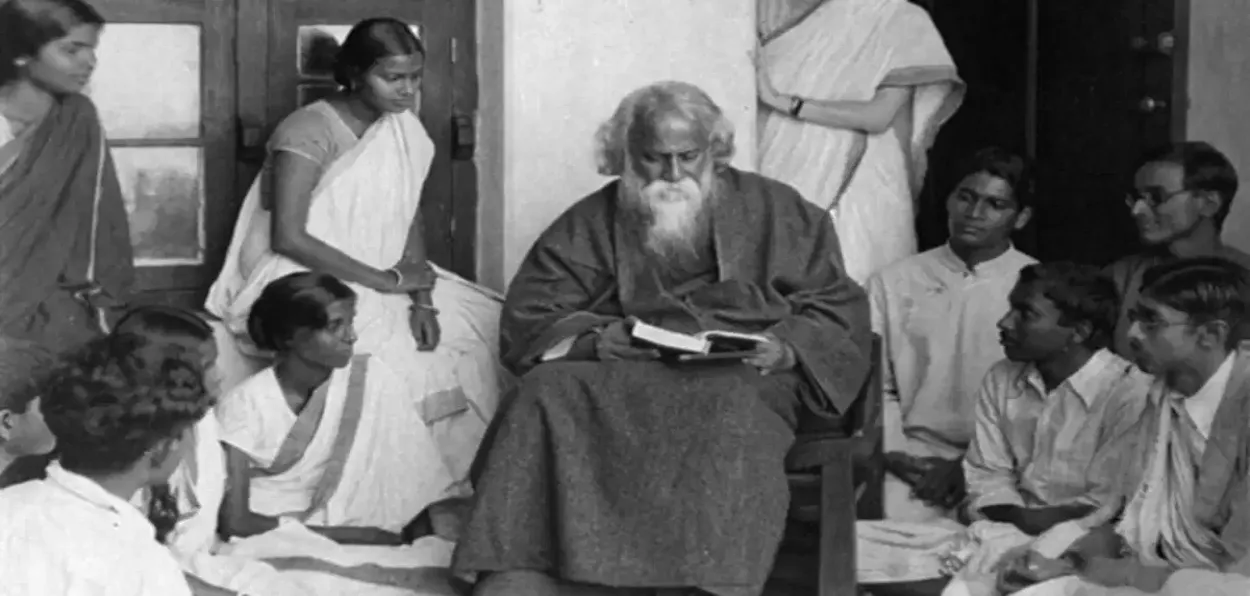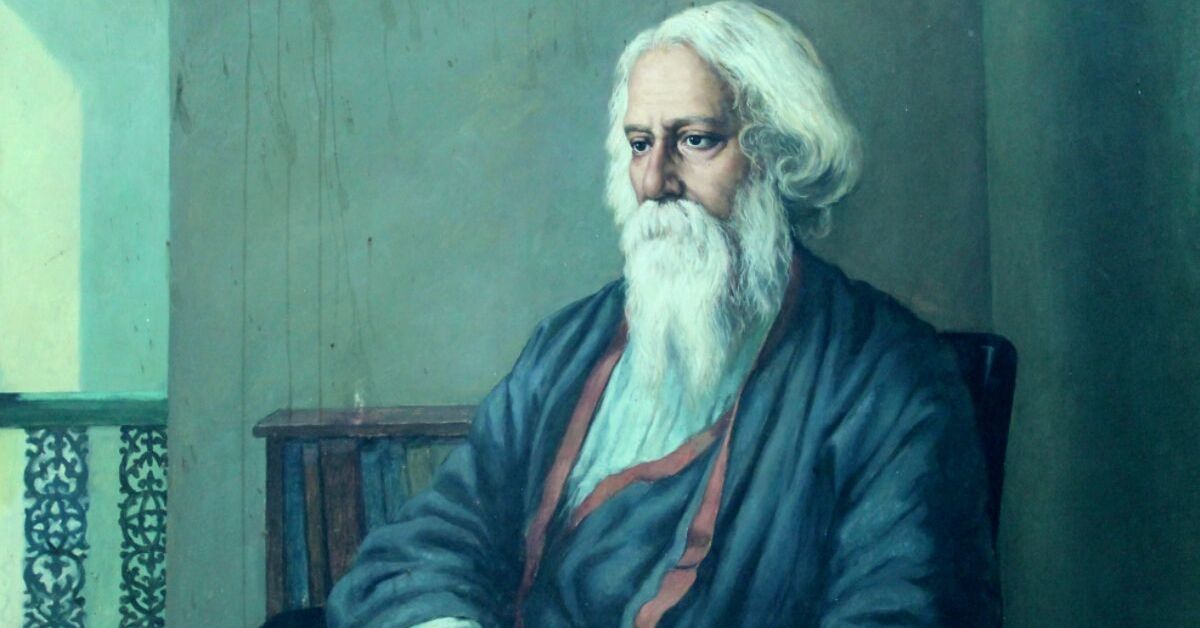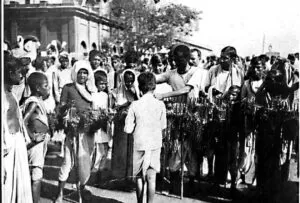
Ehtisham-ul-Haq Shami/ Kolkata
In August 1942 "Angrezon, Bharat choda" (Englishmen, you leave India) or the Quit India slogan was raised in Bombay (Now Mumbai) leading to the Indian National Congress passing a resolution for nationwide protests on August 7, 1942. The Quit India turned out to be a historic moment. Today's Kranti Maidan is named to commemorate that moment.
However, 37 years before the Quit India Movement gripped the nation, Gurudev Rabindranath Tagore's Rakhi Sangeet had filled the streets of Bengal as Hindus and Muslims joined hands to stop the partition of the province. The people rejected Bengal's partition forcing the British to reunite East and West Bengal on 12 December 1911.
Gurudev transformed the religious tradition of Raksha Bandhan to a secular motif of unity among diversity and resisted Banga Bhanga (Partition of Bengal
To stop this nationalist movement, the British decided to partition Bengal. The partition plan was finalised at a meeting led by the Viceroy Lord Curzon in which he convinced Muslims that a separate state was good for them.
Under this plan, the Hindu-majority areas of West Bengal, Bihar, and Odisha were to be separated from the Muslim-majority areas of Assam and Sylhet. In 1905, Bengal was thus divided along communal lines.
 Rabindranath Tagore
Rabindranath Tagore
Curzon believed that Assam should be separated from the Hindu-majority regions of West Bengal, Bihar, and Odisha due to its large Muslim population. The order came into force on 16 October 1905. and the day happened to be Rakhi Purnima.
Rabindranath Tagore saw through the policy of 'divide and rule' of the British government. He launched a campaign in which Muslims and Hindus tied rakhi (the threat of love and security) on each other's wrists in the spirit of Hindu-Muslim brotherhood. The optics of Hindus tying rakhis to Muslims and vice versa was historic and revolutionary.
Tagore used the symbolism and spirit of this festival to portray unity among Hindu and Muslim communities against imperialism. He used the spirit of this festival to offset the plans of his rivals. He said, "Brothers and Sisters, the question that is uppermost in everyone's mind at the moment is the partition of Bengal.
He said, "A cruel wrong has been done to our Bengali brothers and the whole country has been plunged into the unprecedented depths of grief and resentment. The scheme of separatism was born in darkness and it is an insult to the people."
 Hindus and Muslims tying rakhi on each others' wrists
Hindus and Muslims tying rakhi on each others' wrists
For the first time since the beginning of British rule, all sections of the Indian community, without distinction of religion, caste, or creed, were mobilized by a common impulse and without a motive.
Gurudev's words pressurized Bengalis to work together to resist a common enemy leading to a wave of real national conspicuousness. The uprising in Bengal against a severe tyranny surprised the whole of India and the sacrifices of the people did not go in vain. On 18 July 1905, British Governor General Curzon announced the division of Bengal into two provinces, East Bengal and Assam, and the rest of Bengal, which included parts of Bihar and Orissa.
The main political objective of the partition was to divide the population of Bengal and to weaken the nationalist movement. The overwhelming role of Bengalis in the national movement irked the British. They decided to break the unity by convincing the upper-class Muslims that the newly formed province with its Muslim majority was in their interest. However, it only served to awaken the people in Bengal and make people rise in an unprecedented mass movement that soon spread to other parts of the country.
The anti-partition movement took a militant turn on 7 August 1905 when thousands of people at a meeting in Calcutta vowed to boycott British goods until the partition proposal was withdrawn. The partition of Bengal took place on October 16, 1905, which day was observed as a day of national mourning throughout Bengal.
During this movement, Swadeshi, or the use of Indian goods and boycotting British goods became an integral part of the freedom struggle. Thousands of people took the pledge of using Swadeshi and boycott. The December 1905 Banaras session of the Congress, chaired by Gokhle, also passed resolutions supporting Swadeshi and the boycott. In the 1857 War of Independence, Hindus and Muslims fought together against British imperialism.
 Raksha Bandhan thali
Raksha Bandhan thali
Till 1857 there was no religious problem in India. Earlier, Hindus used to go to temples and Muslims to mosques, but there was no enmity between them. Hindus and Muslims used to help each other, Hindus participated in Eid celebrations, and Muslims celebrated Holi and Diwali with Hindus. Muslim rulers like Mughal, Nawab of Oudh Nawab of Murshidabad, Tipu Sultan, etc. were all religiously neutral.
He used to organize Ram Leela, and participate in Holi, Diwali etc. The way Mirza Ghalib wrote letters to his Hindu friends Shiv Narayan Aram, Hargopal Tafta, etc, are examples of the closeness of Hindus and Muslims.
Hindus and Muslims fought the War of Independence of 1857 as one people. This unnerved the British and they tried to incite the followers of these religions separately, Theodore Beck, the principal of the Mohammedan Anglo-Oriental College, told Syed Ahmad Khan that the British and the Muslims could unite as the Hindu-Muslim unity was not sensible.
It's no coincidence that communal riots in India started only after 1857; these were surely instigated by the British. They bribed Hindu priests to speak against Muslims in temples; and Maulvis for speaking against Hindus in mosques.
ALSO READ: Moonis Ather Indiawali from Karachi hosts podcast to build bridges
Hussain Ahmad Madani, the author of the book Muttahida Qaumit and Islam, who was for a united India, believed that the British government was trying to scare Muslims with the idea that they would lose their identity and assimilate into Hindu culture after independence. The reality was that they wanted to weaken the Indian nationalistic movement by sowing seeds of doubt and confusion in the minds of Muslims. According to Madani, the two-nation ideology strengthened the British government.
